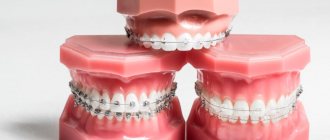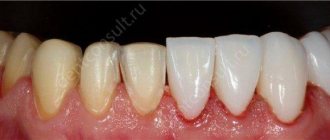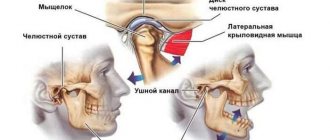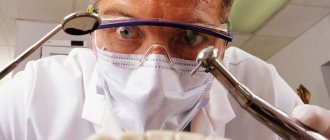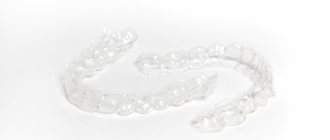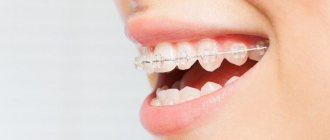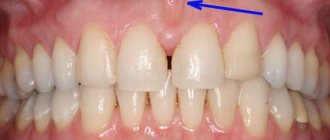Scope of activity of an orthodontist
The main task of an orthodontist is the correction of malocclusions6,10, which have an extremely adverse effect on the health of the oral cavity and the body as a whole2,8. It also corrects unevenness of the dentition and individual teeth, dentofacial and maxillofacial anomalies10.
Preventive measures taken by the orthodontist are aimed at preventing the development of the above problems and eliminating risk factors10.
The responsibilities of the orthodontist also include the prevention of complications arising from malocclusion2:
- dysfunction of the temporomandibular joint;
- difficulty breathing;
- changes in diction;
- headaches;
- digestive problems.
Even in the absence of serious defects, many strive to have a Hollywood smile and absolutely straight teeth, so the services of an orthodontist are quite in demand.
Dentist-therapist
The general practitioner (odontologist) makes a primary diagnosis, provides the necessary medical care that is part of his professional duties, or refers to other specialists. List of manipulations performed by a therapeutic dentist:
- preventive examination of the oral cavity;
- drawing up a treatment program;
- relief of acute toothache;
- removal of inflamed nerves;
- ordering the necessary diagnostic tests;
- planned or emergency removal of caries;
- treatment of pulpitis, periodontitis, periostitis;
- therapy for inflammatory gum diseases.
An important task facing the therapist is the correct diagnosis. The choice of optimal tactics and further prognosis of the disease depend on this.
What treatment methods does the orthodontist use?
There are various methods of orthodontic treatment. The most common of these is hardware3. It involves the use of various designs - removable and non-removable3,11 - with which you can9:
- expand or narrow the dentition;
- speed up or slow down the rate of jawbone growth;
- change the position of individual teeth and the position of the lower jaw.
The devices that the orthodontist works with include:
- Braces are a non-removable system that is fixed on the teeth3,9. It includes the braces themselves, rings, locks and arches3. These elements put pressure on the teeth, moving them in the desired direction3. The method is considered one of the most effective, which is why braces are used to correct most malocclusions4.
- Plates are removable devices with various active elements (screws, springs, hinges). They permanently or intermittently attack the teeth and jawbone3. Plates can be placed at any age, but the best age is considered to be 6-9 years11.
- A pre-orthodontic trainer is a removable elastic aligner that is usually placed at night3. It improves the position of teeth and normalizes breathing, swallowing and muscle tone1.
- Aligners are transparent aligners made of a special thermoplastic material5. They are made after computer 3D modeling of human jaws5, which allows you to see the final result even before they are installed. Aligners should be worn 24 hours a day, removed when eating and brushing teeth, and replaced with new ones every 2 weeks7.
Orthodontics and orthopedics in dentistry difference
The biggest difference, perhaps, is that in addition to an orthopedic dentist, there is also a general orthopedic surgeon.
Next, the orthodontist sets the teeth in their places, aligns the bite, but does not affect the shape of the teeth themselves.
An orthopedist uses dentures to restore teeth and replace lost teeth, thus restoring chewing function and psychological comfort.
In general, there is quite a big difference between orthopedics and orthodontics in dentistry; specialists deal with completely different treatments and we hope that now you will not confuse them.
When to see an orthodontist
Some people mistakenly believe that bite correction can only be done in childhood or adolescence. But most of these problems can be solved at any age,2 which is why adults with uneven teeth and malocclusions should consult an orthodontist.
Considering that the appearance of malocclusion pathologies can be prevented already in early childhood, it is better to regularly show the child to the orthodontist, even if his teeth seem straight1. When examining children, the orthodontist draws parents' attention to factors that interfere with the correct formation of the bite. The doctor gives recommendations on how to properly monitor the baby’s diet, breathing and sleep. Normalization of these functions has a beneficial effect on the development of the dental system and the entire organism as a whole1.
Orthodontic treatment is carried out comprehensively, combining the work of a dentist-therapist, an orthopedist and surgeon, a speech therapist, an otolaryngologist and other specialists. However, the leading role belongs to the orthodontist. He develops a comprehensive plan for the prevention and treatment of dental anomalies, coordinates the work of other doctors and conducts follow-up2.
The information in this article is for reference only and does not replace professional advice from a doctor. To make a diagnosis and prescribe treatment, consult a qualified specialist.
to come back to the beginning
Dentist Orthopedist
In dentistry, an orthopedist specializes in restoring damaged teeth and replacing missing teeth. He does this with the help of prosthetics, which is why an orthopedist is also called a prosthetist.
You should contact an orthopedist if you notice:
- Loss of one or more teeth
- Decay of teeth that cannot be filled
- Too loose or sensitive teeth
- Aesthetic dissatisfaction with your teeth - an orthopedist can correct the color, shape and size of teeth
- Pathological conditions of the TMJ
Dentists of other specialties are often referred to an orthopedist; for example, when a tooth is more than half destroyed, therapists say that it is not practical to restore such a large defect with a filling and refer you to an orthopedist to install an inlay or crown.
Bibliography
- Bogdan V. E. et al. Prevention of dental anomalies and orthodontic treatment at an early age // Chief Doctor of the South of Russia. - 2013. - No. 6 (37). — P. 4-6
- Kyzina S. L., Rebrova A. E. Orthodontics for everyone // Healthcare of Ugra: experience and innovations. — 2022. — No. 4. — P. 33-38
- Tokarevich I.V. General orthodontics // Educational method. allowance. — Minsk: BSMU. - 2015. - 80 p.
- Khotayt A. Kh., Butvilovsky A. V. Method of manufacturing a non-removable individual retainer // Orthodontics gnathology. — 2022. — November. — No. 2 (3). — P. 22-26
- Kipkaeva L. V., Belkevich V. V. Application of the aligner system in the treatment of dentofacial anomalies in the permanent dentition. Design features. Treatment effectiveness // Orthodontics gnathology. — 2021. — April. — No. 1 (4). — P. 50-55
- Bulgakova A.I. et al. Structure and equipment of dental organizations // Textbook. - Ufa: Publishing house of the Federal State Budgetary Educational Institution of Higher Education BSMU of the Ministry of Health of Russia. - 2016. - 84 p.
- Ganjali N. T. Braces or aligners? // Bulletin of medical Internet conferences. — 2014. — T. 4. — No. 4. — P. 370
- William R. Proffitt et al. Modern orthodontics // Textbook. — 686 p.
- Demina M.A. Positive and negative aspects of working with orthodontic structures, selection criteria // Bulletin of medical Internet conferences. - 2022. - T. 7. - No. 9. - P. 1440-1442
- Alimirzoev F.A. Modern ideas about complex treatment in orthodontics // Achievements of university science. — 2014
- Shkavro T.K., Pavlova I.A. Orthodontic devices // Textbook. – Irkutsk: IGMU. — 2022. — 32 p.
Basic methods of orthodontic treatment
What does a pediatric or adult dentist, namely an orthodontist, do after making a diagnosis? Having identified the problem and chosen the best option for eliminating it, the doctor sends the patient to prepare the oral cavity for the upcoming treatment. It is necessary to eliminate all carious cavities, as well as remove plaque, remove supra- and subgingival deposits. To create the necessary corrective structure, the orthodontist also takes impressions of the patient’s jaws.
The photo shows professional cleaning of dental plaque.
A good specialist is obliged to argue why he proposes this particular method of solving the problem, and also explain the importance of treatment, because most orthodontic defects lead not only to aesthetic, but also to functional problems of the jaw system, and provoke the development of various dental diseases. Before starting the course, he must tell the patient in detail what difficulties he will encounter, approximately how long the correction will take, and what results can be expected.
On a note!
In recent years, orthodontics has come a long way, and today doctors and patients have a wide choice of modern, effective, safe and highly aesthetic braces.
So, for example, with a liner-type design, in which the plates are attached to the back of the teeth, no one will guess that you have a braces system. But ceramic braces literally blend in with the color of the tooth enamel and become almost invisible. Individual models of sapphire brackets on teeth turn into incredibly impressive jewelry. Malocclusion and crooked teeth are not sudden phenomena, and the process of forming such defects usually takes quite a long time, as does the treatment itself. The choice of a specific technique for correcting an anomaly depends on many factors, including the age of the patient, the type of problem, the degree of its complexity and other characteristics of the clinical picture.
Myotherapy
The most gentle method, which is rather an addition to the main treatment and is used to achieve a better result. Myotherapy is also prescribed to children who have contraindications to the installation of orthodontic appliances. This is a kind of gymnastics that helps the jaw and bite form correctly. Therefore, it is used only at the stage of growth of the dentofacial apparatus. Less commonly, such measures are used in adult patients, usually to prevent relapses.
Myotherapy is most effective in childhood
Hardware method
The corrective design can be installed on both a teenager and an adult patient, but the latter will have to adjust to a longer course. A plate, aligners, or bracket system can be installed as an orthodontic device. The process of correcting dental anomalies is conventionally divided into 2 main stages.
Firstly, the doctor needs to eliminate the problem, and for this, a course of treatment may be prescribed using a specific or several orthodontic devices. The correction can take from six months to several years, and during this time the patient will have to regularly visit his treating orthodontist so that he can monitor the progress of the treatment and adjust it.
This is what correcting a bite with braces looks like
Secondly, after achieving the desired results, the retention stage begins. It is necessary to guarantee the consolidation of the achieved effect. This is a very important stage, without which all treatment may be meaningless. The fact is that after removing the orthodontic structure from the oral cavity, the teeth inevitably begin to strive to take their original position. To prevent this, the doctor installs a retention device for a certain time - this can be a thin wire that fastens a segment of teeth from the back (retainer), or a special mouth guard. This period, as a rule, takes half the time that was spent directly on correcting the defects. Well, if you really look at things, you will still have to wear a retainer for the rest of your life, i.e. many, many years...
On a note!
All types of orthodontic devices differ in appearance, principles and strength, as well as the fastening system.
The doctor can offer several treatment options and models of corrective devices, which gives the patient the opportunity to choose the most preferred method, optimal in terms of effectiveness, timing, aesthetic characteristics and cost. Currently, the most effective and widespread type of corrective device is the braces system, but recently aligners - completely transparent elastic aligners with cells for each individual tooth - have become very popular. They are created individually for each patient in a set of several copies for each subsequent stage of correction. Due to the transparent material, they remain completely invisible on the teeth.
The photo shows the aligners
Surgical method
Surgical intervention is used only in cases where other methods of orthodontic treatment are powerless. Patients in such situations are usually diagnosed with complex pathologies of the jaw system, supernumerary or crowded teeth. True, the surgical operation is not performed by an orthodontist, but by a dental surgeon - this is his specialty. But preparation for such a procedure is carried out together with the orthodontist. In addition, this doctor will guide you afterwards, since it is unlikely that one surgical operation will completely solve the problem.
Scheme for correcting malocclusion surgically
Pediatric dentist
A pediatrician works with patients up to 17 years of age. He must understand the specific features of the structure and functioning of the jaw in childhood. Tasks of pediatric dentists:
- preventive examination;
- teaching the child hygiene skills;
- treatment of dental diseases;
- formation of the correct bite.
The specialist must have special communication skills that allow him to work with young patients. In addition, a dentist working with children must have the knowledge and technology to painlessly treat baby teeth.
Regardless of the specialty, a dentist performing services in a dental clinic has an impeccable knowledge of the theoretical aspects of the main branches of medicine: anatomy, physiology, pathophysiology, pharmacology. The introduction of innovative technologies into the industry obliges dentists to promptly improve their qualification level, master special equipment, dental instruments, manual skills, and be able to work with software.
Dental surgeon
The responsibilities of an oral and maxillofacial surgeon include the most complex clinical cases that are not subject to conservative therapy. His manipulations can improve the patient’s quality of life, provide emergency care, and save a problematic tooth. Objectives of surgical care in dentistry:
- removal of teeth and their fragments after injury;
- peeling of cysts;
- performing surgical procedures in preparation for prosthetics;
- planned and emergency operations in the oral cavity;
- treatment of fractures, jaw dislocations;
- diagnostics, invasive treatment of oral neoplasia, others.
In his work, the surgeon uses high-tech methods: a laser knife, innovative instruments, drugs that make it possible to carry out an invasion with minimal discomfort for the patient.
